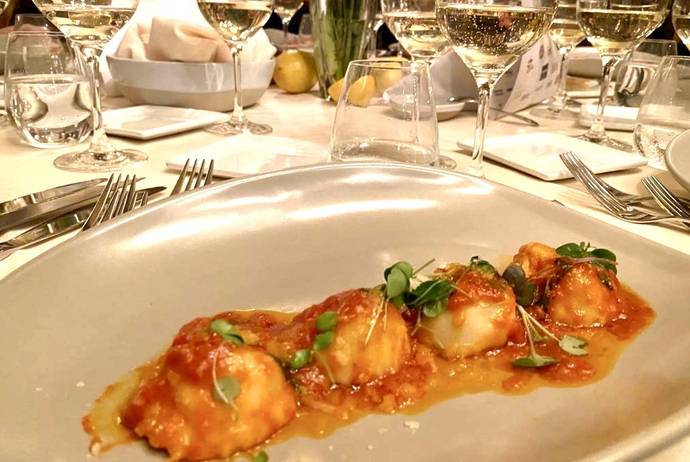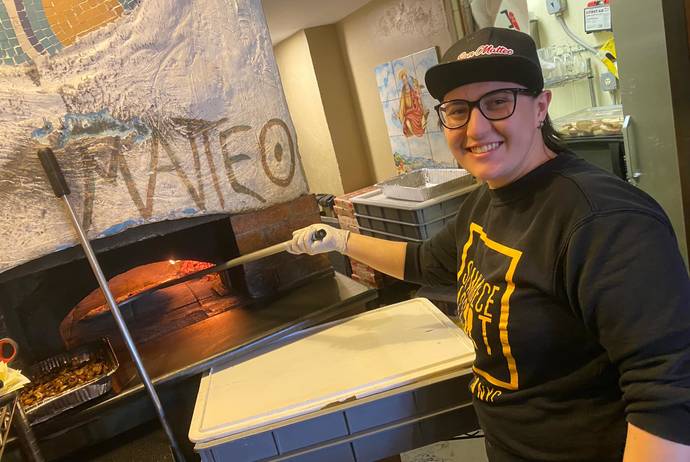“The poet Pablo Neruda called Capri the pearl of the Mediterranean,” Amy Riolo states as she welcomes the guests of “Under the Capri Sun,” an event held last night at New York’s prestigious James Beard House, which she helped to organize, to sit down.
“Everyone loves Capri,” she continues, “so it’s not a hard sell.”
But, as Amy points out, what Chef Pasquale does is present the familiar flavors of the island along with the memories or fantasies they evoke in new and unique forms. “His dishes are a testament to the Mediterranean diet, he works sustainably and thoughtfully in one of the last remaining family-owned restaurants.”
Up to this point, guests have had the chance to sample a delicious selection of hors d’oeuvres inspired by the traditional street food of Campania, including Amalfi Coast-style fried and baked “Montanara” pizza with San Marzano tomatoes and Provolone, a ricotta, provolone, tomato fried pizza by celebrated Neapolitan pizzaiolo Antonio Fusco, and a collaborative fried pizza made by Fusco and filled with Rinaldo’s citrus-infused carbonara.
This is the first US visit for both chef and pizza-maker, who thank everyone for coming before the night’s dishes start coming in.
The appetizer is Chef Rinaldo’s signature “Mistaken Caprese,” an inverted version of the classic salad, in which he somehow managed to enclose fresh tomatoes inside a beautiful round mozzarella, served with an aromatic Fiano di Avellino DOCG from the region’s Cantine Terranera winery (where all of the evening’s wines come from.)
Next, comes a fragrant plate of Caprese-style ravioli, which as the Chef explains, are made without eggs, rendering them lighter and ideal for the warm Summer months. “These are filled with three different cheeses with three different aging periods and fresh herbs from Capri and are served with tomato, basil and ricotta,” he says.
This delicacy comes paired with a wonderfully mineral Greco di Tufo, the second and final white wine of the evening.
Afterwards, the waiters bring out the red, a 2009 Taurasi DOCG - “the Barolo of the South” as the chef calls it - signaling that it’s time for meat: braised beef cheek so soft it immediately melts in your mouth served with Taurasi wine jelly.
This delicacy is followed by a simple yet delicious fennel and orange salad, a perfect sweet and sour palate cleanser to prepare diners for the final dish, the “Panettone di Capri,” a lighter and more summery version of the typical northern Italian winter holiday cake.
“Panettone comes from Milan,” the chef clarifies, “but this year for the first time we’ve had more Panettone sales in the South than in the North. This version is made with mother yeast and semi-candied fruits, which are less dry and sugary.”
Finally, Antonio Fusco kindly offers to demonstrate how he kneads pizza dough as the guests finish sipping on their coffee and Passito and mentally prepare themselves to reluctantly return from this culinary trip to sunny Capri and perhaps begin booking their next vacation there.
----
Ristorante d'Amore
Via Fuorlovado, 36, 80073 Capri NA, Italy
Website >>







































